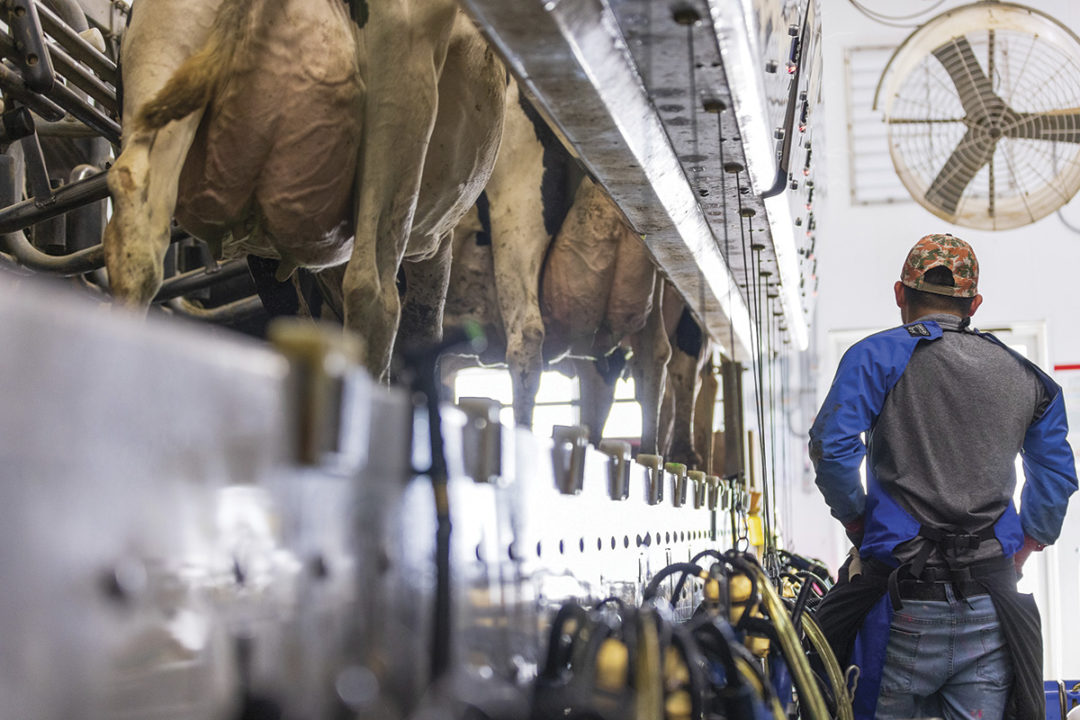Are you feeling anxious about the upcoming change of over-the-counter medically important antibiotics shifting to a prescription status in June? Don’t be. It can be a very smooth transition by focusing on what you’ve always been focusing on: excellent animal husbandry. Taking the simple step of establishing or updating your veterinary-client-patient relationship (VCPR) by having a discussion with your veterinarian and having a plan in place come June can be an easy process for dairy producers.
“By preparing now for the upcoming transition and establishing a VCPR with your veterinarian, not much has to change for producers as to where they’ll be able to get mastitis tubes moving forward,” says Michele Barrett, DVM, medical lead for U.S. cattle technical services at Zoetis.
Currently producers can obtain intramammary products through a variety of means such as their veterinarian, a retailer or brick-and-mortar store, or a distributor who can ship directly to the farm. If retailers decide to pursue a license that allows them to fill prescriptions, they can continue to sell those products moving forward, once the producer has a veterinary prescription.
“Once producers obtain that prescription, they can still purchase directly through their veterinarian or any type of dealer store, retailers or distributors that are licensed to fill veterinary prescriptions,” Barrett says. “In many markets, it may not change at all in how you’re obtaining those products, and in other markets, having that VCPR can help you make the adjustments you need.”
Why is this change happening?
In 2021, as part of the FDA’s five-year plan for antibiotic stewardship, the guidance for industry (GFI) #263 was provided. This plan builds upon the important steps the FDA has already taken to support the judicious use of antimicrobials in animals and is driven by the concept that medically important antimicrobial drugs should only be used in animals when necessary for the treatment, control or prevention of specific diseases.
“It’s building on their previous initiatives to move the remaining medically important antimicrobials that are currently still available over the counter to a prescription status with veterinary oversight,” Barrett says. “It reinforces the need and value of veterinarian and producer conversations to ensure the judicious use of antibiotics.”
How does antibiotic resistance happen?
Antimicrobial resistance is a naturally occurring process, and it has become more prominent in conversations in recent years as more antibiotics have been used in all types of medicine for human and animal health.
“There's diversity within any bacterial population, and some of that population are just naturally resistant to certain antimicrobials or antibiotics,” Barrett says. “When we apply a pressure to the population, such as an antibiotic, especially in a manner that's not ideal, we can skew that population more toward those resistant bacteria who either tend to survive better or just become a larger portion of the population.”
Examples of less-than-ideal uses of antibiotics would be using antibiotics in a situation where the infection won’t respond to antimicrobials or using a product in a different dose, duration or route of administration than intended on the label.
The great thing about antibiotic stewardship and prevention of antimicrobial resistance it that it starts with what dairy farmers are already focusing on every day – excellent animal husbandry. This includes everything from planning a farm’s facility design all the way to the everyday safe management of animals. As an industry, we have numerous tools for prediction and prevention that form a solid foundation of animal health. Building on that foundation, judicious use of treatments means tailoring animal health decisions to improve outcomes and ensure future efficacy.
“We like to call this the Continuum of Care,” Barrett says. “So, prevention through early detection and proper treatment is where veterinarians will provide additional value in these conversations. They help guide producer treatment choices to make sure the right animals are treated with the right products at the right time.”
What does good judicious use of antibiotics look like in terms of mastitis?
Just as in other areas of animal care, great husbandry practices are going to be the foundation of strong animal health and the judicious use of antibiotics for mastitis.
“For mastitis, this would look like precision management using a genetic test with wellness traits that can tell you which animals are more or less likely to have mastitis, followed by prevention through a complete dry cow program including a core antigen vaccine and a teat sealant, as well as environmental management and proper milking techniques,” Barrett says. “Also, I don't want to forget employee education because it's essential that everyone on the farm knows what the protocols and goals are.”
With this transition of over-the-counter medically important antibiotics shifting to a prescription status, now is a great time to sit down with your veterinarian and review all of your animal health protocols to make sure you’re optimizing your management.
“I think the additional step is then monitoring. It's very important that once a plan is set in place, they [producers] are continuing to follow up and make sure they're complying with those protocols and their intended goals,” Barrett says. “If they're not equipped or don't have the time to do it on their farm, they can reach out to third parties within the industry who have a lot of experience helping walk producers through all the opportunities from that dry cow program to lactation and beyond.”
How can producers prepare for products needed to treat mastitis after June 2023?
The simple answer is to start preparing now. Set up a VCPR, and in the future, when the transitions happen, there won’t be any questions or surprises about how to obtain a product once the transition occurs.
“Setting up a VCPR now also allows for discussion of what the local opportunities for purchasing those products will look like after the June transition,” Barrett says. “If you are prepared, when it gets to June and you need to obtain those products to improve animal health on your farm, you won't have to worry about scrambling to get a plan in place.”
A VCPR indicates that a veterinarian has a deep understanding of the management protocols and the animal health challenges within your operation. They can give you the best guidance possible for optimizing animal health and tailoring it to your operation.
“The VCPR serves as an indication that those medically important drugs affected by this guidance are being used under veterinary oversight and are being used appropriately so that we are reducing the risk of antimicrobial resistance moving forward,” Barrett says. “Because again, preparation and prevention are key to antibiotic stewardship.”







